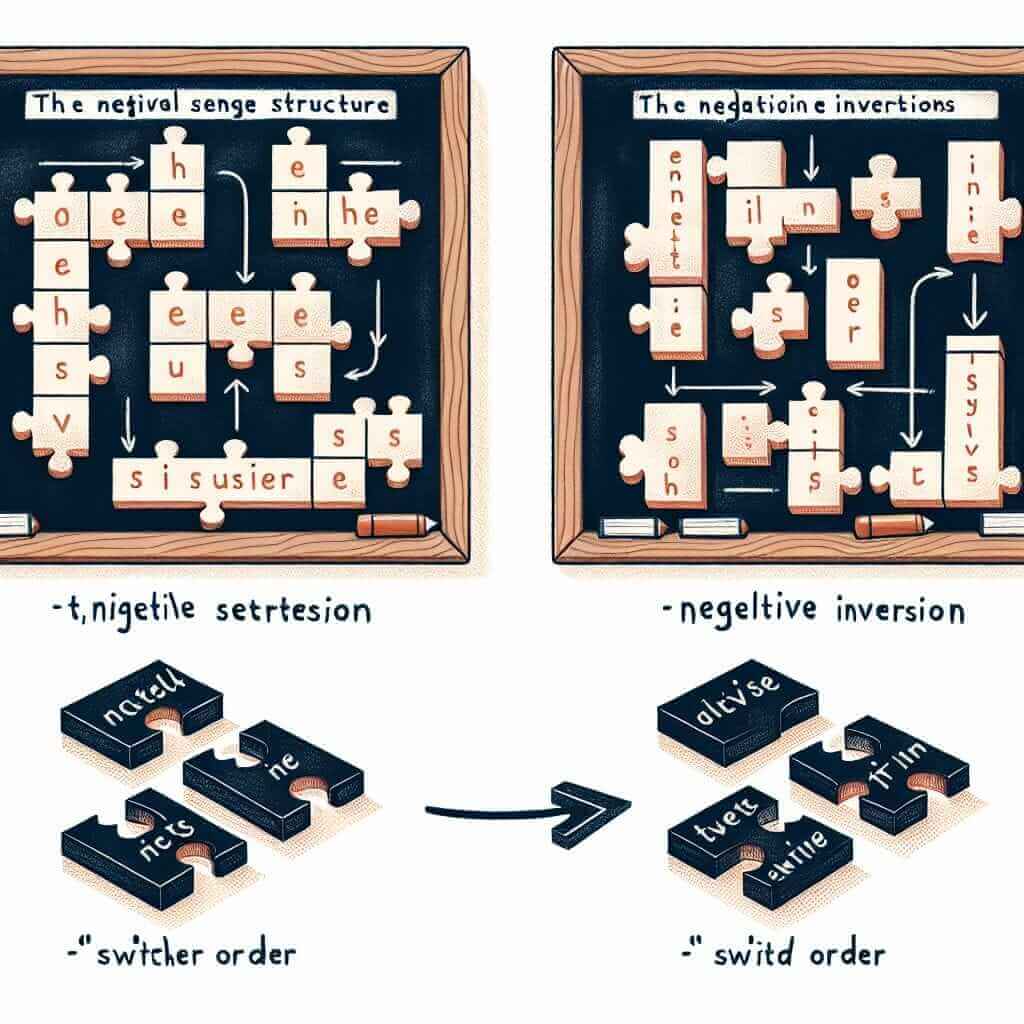Negative inversion – it sounds like some complex grammatical black magic, doesn’t it? While the name might seem intimidating, it’s actually a rather elegant way to add emphasis and sophistication to your writing and speaking, two things highly valued in the IELTS exam. You’ve likely encountered it before in phrases like “Never have I seen…” or “Rarely does it happen…”. Mastering this technique can be your secret weapon to achieving that coveted Band 7 or higher.
Let’s say you’re presented with a Writing Task 2 prompt about the impact of technology on social interactions. Instead of a predictable sentence like “Technology has significantly affected the way we communicate,” imagine saying: “Seldom has technology had such a profound impact on human interaction.” See the difference? Negative inversion adds weight and intrigue to your language.
Deconstructing Negative Inversion: Why Use It?
In the simplest terms, negative inversion flips the standard subject-verb order in a sentence, often for dramatic effect or to emphasize the negative element. It’s not just about sounding fancy though; using negative inversion demonstrates a command of advanced grammatical structures, something IELTS examiners love to see.
Here’s a breakdown of why you should befriend negative inversion:
- Enhanced Expression: It allows you to express surprise, disagreement, or strong opinions more emphatically.
- Structural Variety: It breaks the monotony of simple sentence structures, making your writing more engaging and dynamic.
- Higher Band Score Potential: Using complex grammar structures correctly is a surefire way to impress the examiners and boost your score.
The Formula and Its Applications
The magic formula for negative inversion is relatively straightforward:
Negative Adverbial + Auxiliary Verb + Subject + Main Verb
Let’s break down this formula with examples relevant to different sections of the IELTS:
Writing Task 2 (Opinion Essay):
- “Under no circumstances should children be allowed unlimited screen time.” This sentence clearly and forcefully presents your stance on the issue.
Speaking Part 3 (Discussion):
- “Not only does online learning offer flexibility, but it also allows for personalized education.” This structure allows you to present a multi-faceted argument in a concise and sophisticated manner.
Listening Section:
Be prepared to identify negative inversion in the listening passages. For example, you might hear a speaker say, “Rarely do we see such a dramatic shift in public opinion.” This signals an important point being made.
Writing Like a Pro: Examples in Action
Let’s see negative inversion in action within the context of IELTS writing:
Topic: The influence of social media on body image.
Standard Sentence: “We rarely consider the negative impact of heavily edited images on social media.”
Sentence with Negative Inversion: “Rarely do we consider the insidious impact of heavily edited images proliferating on social media.”
Notice how the second sentence, using negative inversion, carries more weight and emphasizes the lack of consideration given to the issue.
Here’s another example:
Topic: The importance of preserving cultural heritage sites.
Standard Sentence: “These historical landmarks are not just tourist attractions; they are integral to our understanding of the past.”
Sentence with Negative Inversion: “Not only are these historical landmarks tourist attractions, but they are also integral to our understanding of the past.”
The inversion in the second sentence creates a parallel structure that emphasizes the dual importance of cultural heritage sites.

Reaching for that Band 8: Advanced Techniques
While the basic formula is easy to grasp, mastering negative inversion involves understanding its nuances:
- Vary Your Adverbs: Don’t just stick to “never” and “rarely.” Experiment with words like “seldom,” “hardly,” “scarcely,” “nowhere,” “under no circumstances,” and “at no time.”
- Placement is Key: The position of the negative adverbial can change the emphasis of the sentence. Play around with different placements to see how it affects the tone.
- Context is King: Negative inversion is most effective when used sparingly for impact. Don’t overuse it, or it will lose its power.
Common Pitfalls and How to Avoid Them
Even seasoned English speakers can stumble with negative inversion. Here’s where many IELTS candidates go wrong:
- Incorrect Verb Form: Using the wrong auxiliary verb or tense is a common error. Remember, the auxiliary verb must agree with the tense of the main verb.
- Incorrect: Never I have witnessed such beauty.
- Correct: Never have I witnessed such beauty.
- Overuse: Using negative inversion too frequently makes your writing sound forced and unnatural.
- Misplaced Emphasis: Using inversion when a simple sentence structure would suffice can detract from your message.
Conquering Inversion: Your Path to IELTS Success
Mastering negative inversion, like any grammatical tool, requires practice and a keen eye for detail. Incorporate it gradually into your writing and speaking practice. Pay close attention to the placement of elements and the overall rhythm of your sentences.
Remember, the IELTS exam isn’t just about showcasing a vast vocabulary; it’s about demonstrating your command of diverse grammatical structures to articulate your ideas with clarity, precision, and style. So go forth, experiment with negative inversion, and watch your IELTS score soar!